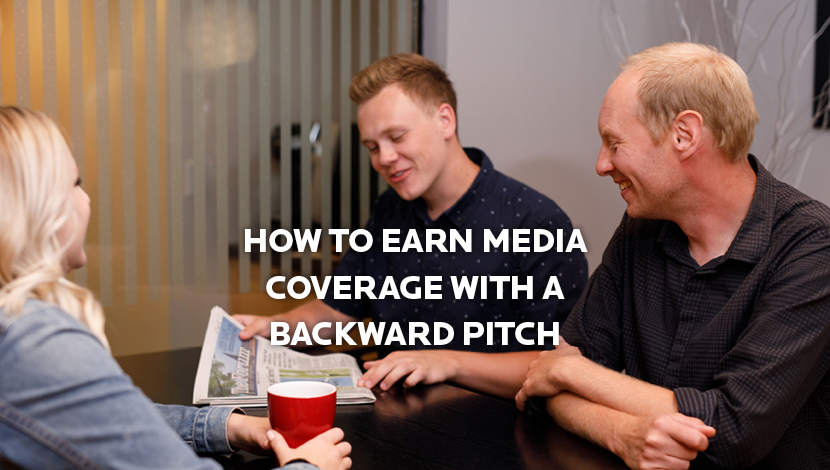
“Those who tell stories rule society.” – Plato
Earned media is a part of your comprehensive paid media plan. This portion of the plan is the part you control. What better way to control the news than to write the story yourself?
Proactively up your earned media potential by sending your published story to the media, e.g., make a backward pitch. Here are the steps:
- Write the story.
- Add visuals.
- Self-publish.
- Share the news.
- Make the pitch.
- Write the story.
You, more than anyone else, find your news item fascinating. Help others share your enthusiasm and put the story in context of the current local, national or industry-specific landscape.
For example, is there a human impacted by the results of your study? That person’s narrative provides context and emotion to the data. Feel-good stories matter even on a national level.
Is there a “how it’s made” story behind your new product release? Does your business update illustrate a larger economic trend? Interesting stories generate interest in your business.
In addition to the relevant information be sure to include quotes from people close to the project or event. Do this even for routine announcements like a new hire or annual report.
Pre-planning will help with story placement too. Identify time elements throughout the year that will give life to your story or help you tag onto larger news stories as they arise. Occasionally, this will mean holding a story until the timing is right.
- Add visuals.
It’s widely known that media consumers are visually motivated and media outlets have limited resources. Bridge the divide by providing great imagery to help journalists tell your story.
- Provide high-resolution photos or videos. It’s best if you have a library of your own curated images. If that is not possible, subscribe to a photo-sharing site (such as com or shutterstock.com).
- Include quality infographics. Summarize your report, package the data or condense your key takeaways in an easy to read graphic. Keep it simple. Your full story will provide the narrative. This visual should offer high level information only.
- Quote callouts are great attention getters and are easily shared across multiple platforms. Be sure they are thought-provoking or attention-grabbing.
- Self-publish.
Post the story on your company’s website. Refrain from using a “site admin” authorship. Instead, include an author box that links to your bio page or credentials.
If it makes sense, link to other pages within your site. Use a strong URL, title tag and meta description.
You can also publish on your own personal LinkedIn account with their blog feature. Your business page, which does not have this feature, can then share your post to the company’s network. This technique has a bonus of positioning you as a thought leader.
- Share the news.
Your story has up to five shareable elements:
- Unique URL
- Photos
- Infographics
- Videos
- Quotes
Start sharing internally. Your employees, volunteers and other stakeholders are the best messengers to spread your news. Send the update with a link and a cover image. Encourage staff to share the story across their social networks.
Then: Tease it out.
When you watch a news program, just before the commercial break the anchor usually provides a “tease” for the story coming up after the break. Online, this practice is often referred to as “clickbait,” but that does not necessarily make it a bad thing. It’s simply a strategy to gain viewers or readers.
That’s the concept to use here too. Use images from the story on social channels and link to the content published on your site. Compelling visual content generates curiosity and interest.
Keep in mind your audience varies across social platforms. Rather than auto-posting from Instagram to Facebook and Twitter, use different elements from the story that work with the platform and the audience. For example, LinkedIn’s business audience may be more interested in the infographic than your audience on Instagram that will be motivated by the emotionally charged photo placed in the article.
- Make the pitch.
This is what we mean by backward. Now that your story is out there, it’s time to reach out to the media.
When you do, personalize your pitch to each journalist you send the story to. Include a direct link to your original story, not your home page. Put the story in context and tell them why they should care. Offer additional information, interview opportunities or other relevant assets to entice the journalist to run your story.
Metrics also help. If you are able, show that your story is getting traction as a proof point for your relevancy. (Read more about PR measurement here.)
If you are consistently the first to deliver quality news, you will become a trusted source for journalists and a thought leader in your industry. Persistent outreach, if done well, can foster a relationship with journalists and ultimately garner more earned media for your brand.
Need help with media relations? We’ve got you covered. Contact us and let’s talk PR strategy.
